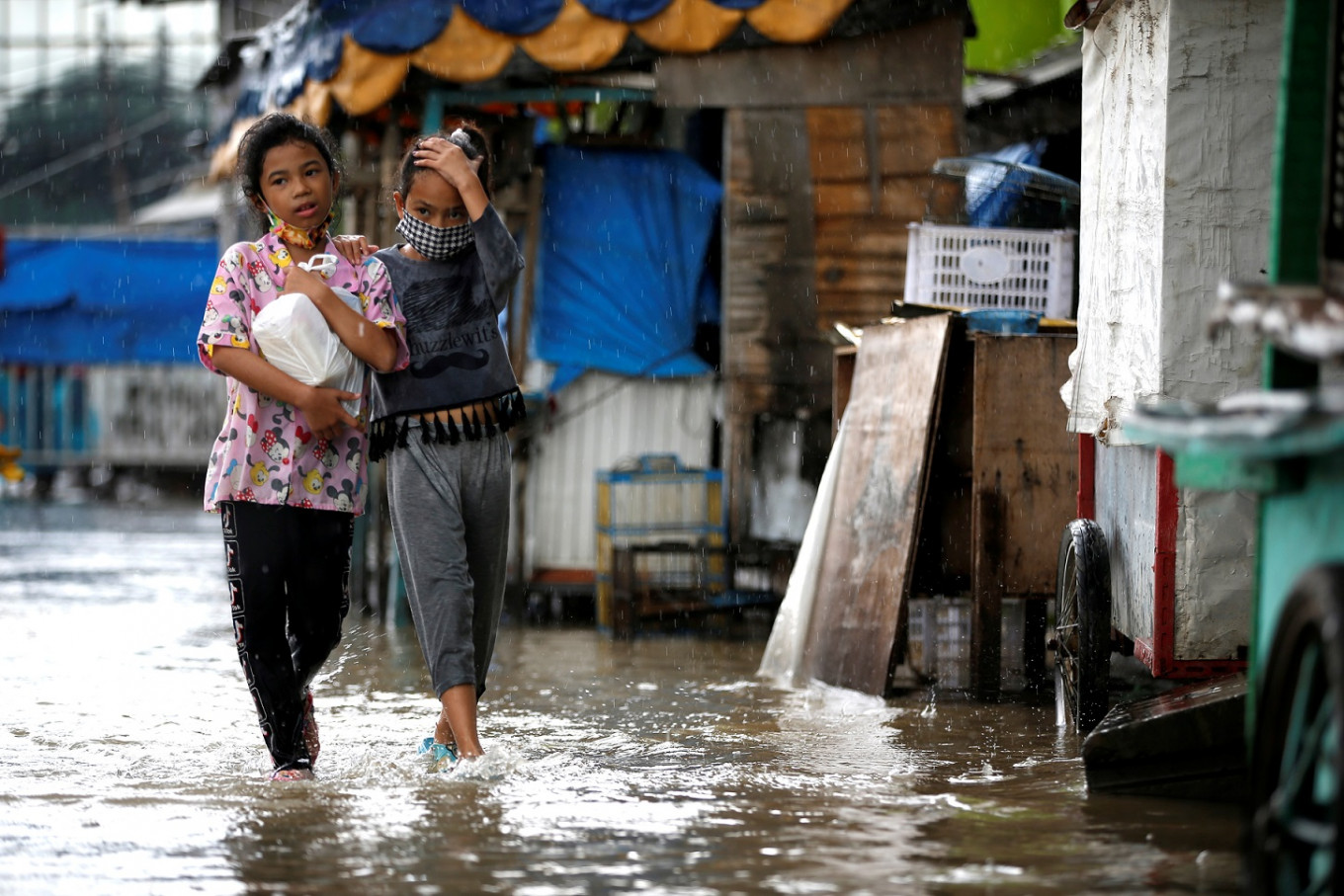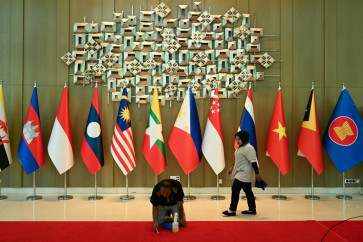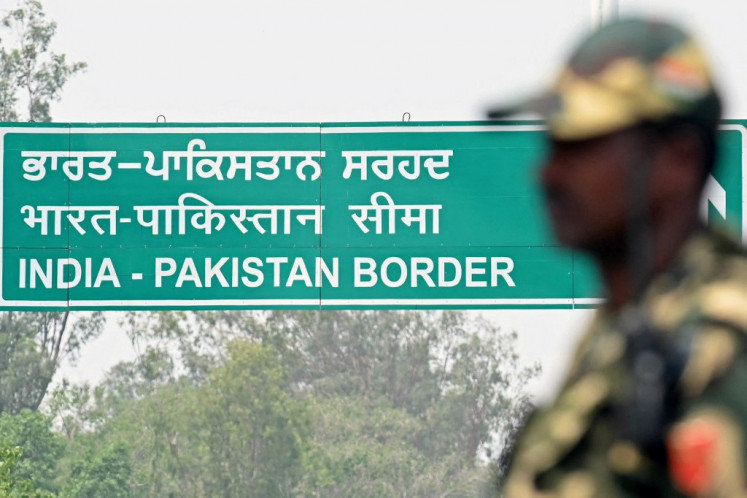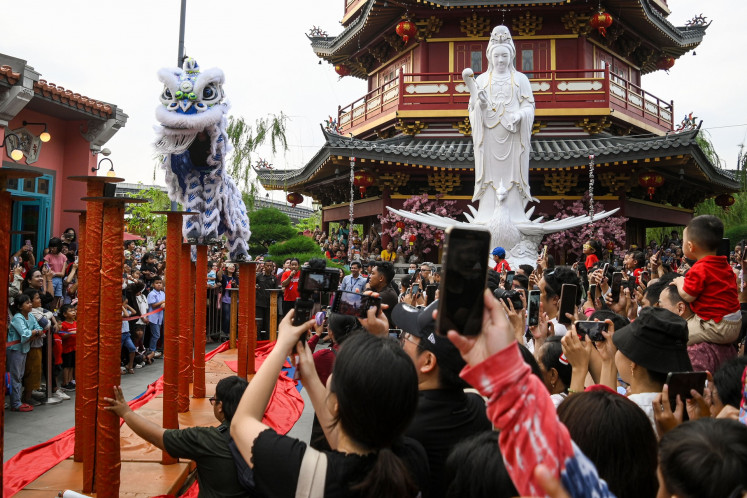Jakarta braces for floods, dengue fever as La Niña arrives
Jakarta disaster agency warns residents of the capital and its satellite cities of possible extreme weather and floods.
Change text size
Gift Premium Articles
to Anyone

T
hreats of flooding and a surge in dengue fever cases loom in Greater Jakarta as the weather phenomenon La Niña returns for the second time this year and it is expected to last until February of next year.
Jakarta Disaster Mitigation Agency (BPBD Jakarta) has warned residents of the capital and its satellite cities -- Bogor, Depok and Bekasi in West Java and Tangerang in Banten -- of possible extreme weather and subsequent hydrometeorological hazards as a result of the weather anomaly.
"The public should remain vigilant about potential extreme weather, including heavy downpours, strong winds, thunderstorms and hail that could result in flash floods, landslides or whirlwinds," the agency posted on Instagram on Sunday.
The World Meteorological Organization (WMO) defines La Niña as “the large-scale cooling of the ocean surface temperatures in the central and eastern equatorial Pacific Ocean, coupled with changes in the tropical atmospheric circulation, namely winds, pressure and rainfall”.
The weather phenomenon tends to bring wetter and longer rainy seasons and triggers extreme weather in Indonesia, causing floods, landslides, heavy winds and extreme waves.
In February of this year for example, more than 1,300 people from 20 neighborhood units in Jakarta had to take shelter when floods inundated their homes as La Niña peaked.
Read also: Thousands evacuated, traffic disrupted as floods hit Jakarta at rainy season peak
Meteorology, Climatology, and Geophysics Agency (BMKG) head Dwikorita Karnawati said that compared with last year, more regions across the archipelago would feel the impact of La Niña this year.
"More regions in Java, West and East Nusa Tenggara, Sulawesi and Sumatra will be affected by La Niña this year. Rainfall in those regions will increase by around 20-70 percent compared with normal," she said.
According to the BMKG, Indonesia has experienced more frequent occurrences of La Niña in the past few decades due to climate change and global warming, from intervals of between five and seven years in 1950-1980 to between two and three years in 1981-2019.
Bracing for disasters
Jakarta Deputy Governor Ahmad Riza Patria said that the city administration had carried out several measures to anticipate hydrometeorological disasters triggered by La Niña, including creating more vertical drainage across the capital.
"We've built 18,111 absorption wells so far, 67 percent of our targeted 26,000 wells. They have proven effective at minimizing the duration of inundations," Riza said on Monday as quoted from antaranews.com.
Jakarta has prepared more than 1,000 permanent and portable water pumps and installed almost 300 flood-warning devices. It has also prepared emergency shelters and logistical needs for evacuees and is training hundreds of emergency response unit (Tagana) personnel in case of flooding.
Read also: Floods hit several regions, killing seven in East Java
Similar to Jakarta, the Tangerang administration has prepared 200 water pumps, 24 rubber boats, 18 excavators and several water trucks to provide clean water for evacuees in case floods hit the city.
In Bekasi, which has experienced a series of floods in the past few weeks, authorities are dredging and clearing rivers as well as working on river-rehabilitation programs to minimize the risk of future flooding.
Meanwhile, in Bogor authorities are putting in extra efforts to clear the drainage system and waterways following more than a dozen hydrometeorological disasters in the region last week, according to Mayor Bima Arya Sugiarto.
"I urge the public to remain alert for extreme weather as rainfall intensity is increasing. I've asked local leaders and BPBD Bogor officials to pay extra attention on flood-prone areas," Bima said recently as reported by kompas.com.
Heavy rainfall triggered a series of disasters -- including flash floods, landslides and whirlwinds -- in Bogor city and Bogor regency on Nov. 7, leaving one person injured, two people missing and more than 60 houses damaged.
Dengue fever on the rise
Aside from extreme weather, authorities in Greater Jakarta have also urged the public to remain alert to a possible dengue fever outbreak, as the population of Aedes aegypti mosquitoes -- the primary spreader of the disease -- usually increases during the rainy season.
Read also: Indonesian researchers breed 'good' mosquitoes to combat dengue
Tangerang, Depok and Bogor, have reported an uptick in dengue fever cases, with hundreds of cases reported in the past two months alone.
Although cases are still relatively low outside of the three regions, authorities have been intensifying efforts to mitigate the risk of dengue fever outbreaks, including by fogging with insecticide a number of areas and neighborhoods.
Fogging is one effective method of exterminating the mosquitoes.
"It's very important to be cautious and proactive to prevent spikes in dengue fever cases, especially as we enter the rainy season," Central Jakarta Deputy Mayor Irwandi said on Monday.
Officials have also encouraged residents to employ larvicides where necessary and use the state-sponsored triple action method of draining, covering and burying any containers that can hold water, where mosquitoes usually lay eggs.









